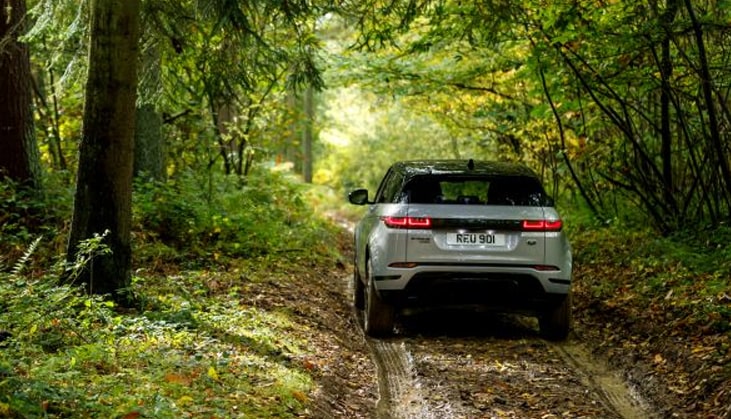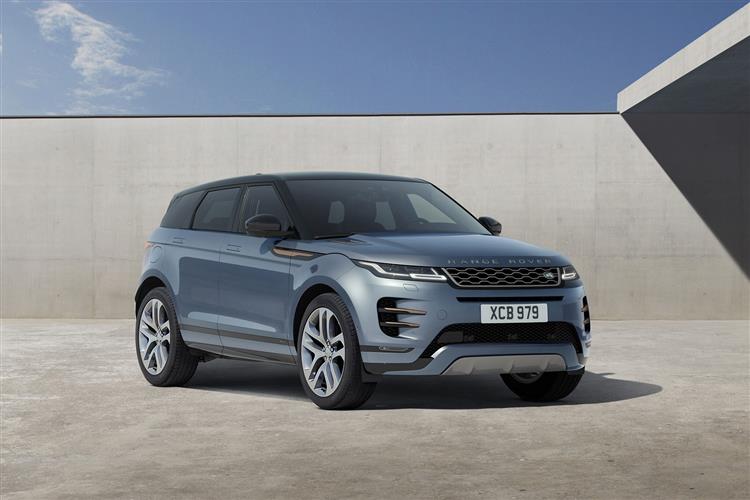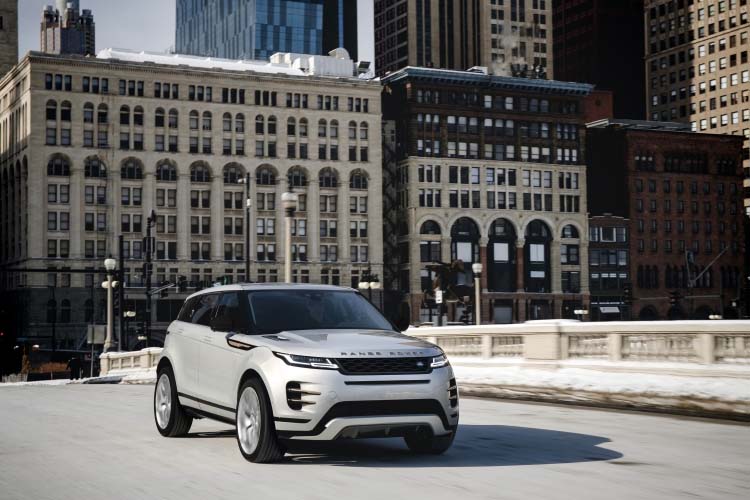In light of the Range Rover Evoque being crowned as Hippo Leasing’s most popular new and used vehicle in 2021, dominating both our new and used enquiries, it seems our customers value sophistication, elegance, capability and performance.
Offering an affordable entry point for one of the most aspirational badges on any forecourt, we thought now might be a good time to revisit our review from earlier this year…
Overall verdict
When the Range Rover Evoque was remodelled in 2019, it brought with it almost everything the initial car was lacking.
A more simplistic, modern styling, luxurious interior, improved off-road performance and a wider range of engine options, including a plug-in hybrid variant.
It took all the doubts and concerns about the original Evoque and transformed them into a piece of motoring mastery; one which trumps every other vehicle in its class in almost every department.
There are still certain elements that could be better; mainly the sometimes lethargic nature of the nine-speed automatic gearbox. But on the whole, nothing else comes close to the Range Rover Evoque.
It’s a vehicle in a class above its competition. It’s a proper Range Rover.
Pros of Range Rover Evoque
- Looks amazing
- Super comfortable ride
- Real luxury feel
Cons of Range Rover Evoque
- Automatic gearbox can be slow
- Steering isn’t as sharp in the corners
- Divisive styling
Design and styling
At first glance, the Range Rover Evoque doesn’t look hugely different to its predecessor. And that’s because size-wise, it isn’t. In fact, the current Evoque comes in pretty much exactly the same dimensions as the one that came before.

However, as the famous quote goes, the beauty is in the detail.
A more minimalist design includes the same front grille, LED headlights and door handles you find in the much more expensive Range Rover Velar.
While the coloured accent detailing on the side, bonnet and front gives it a prestigious aura and emphasises the attention to detail taken in the styling.
As well, the old Evoque wasn’t exactly a bad-looking car. In fact, it looked great. So if you already have a great base from which to start, why change too much?
Range Rover has stuck with what they know works, fine-tuning where necessary, and the end result is another stunning looking vehicle.
MPG, running costs and environment

|
Fuel | Petrol, Diesel & Hybrid |

|
Drive | Manual & Automatic |
SUVs, of any size, don’t have the best reputation of being the most economical. That often means they’re heavy on fuel and not great for the environment either.
For the most part, that’s also true with the Range Rover Evoque. Especially if you want a petrol engine.


In petrol form, the Evoque will return between 29.3 and 31.6 mpg. Not amazing figures, although about average for a car of its size with four-wheel drive.
With the diesel, those numbers rise to between 37.8-46.3 mpg, depending on which model you choose.
However, if fuel economy is crucial, there is always the plug-in hybrid P300e PHEV option: this will give you 141 mpg according to the WLTP real-world tests, although it does depend on how much you use the pure electric mode.
Running costs
The running costs of a Range Rover Evoque are around class average. In a petrol model, your fuel bill will likely fall between £145 to £160 a month if you cover 10,000 miles a year.
In a diesel, that’ll drop to somewhere in the region of £100 to £125. While in the plug-in hybrid, fuel costs could be as low as £35 a month.
Environment
The petrol and diesel Range Rover Evoque emit between 160g/km and 214g/km of CO2, putting them in the highest band for company car tax.
Meanwhile, in comparison, the plug-in hybrid produces just 44g/km CO2 emissions. This not only makes it greener but a tempting proposition for company car drivers.
Engine, drive and performance
When it comes to the engine choice in the Range Rover Evoque, you have quite a few options available.
Diesel
Despite drivers ditching diesel in recent years, Land Rover still expects the majority of its sales to be powered by a diesel engine.
If you choose it as your powertrain of choice, then you get a 2.0-litre engine with two different power options to choose from; one producing 163bhp badged the D165, and a more powerful 201bhp variant named the D200.

The D165 is available in both manual and automatic, as well as in two-wheel-drive or four-wheel-drive.
Auto versions automatically feature four-wheel-drive as standard and also come with mild hybrid technology; helping you lower your fuel economy around town.
Petrol
If you’d rather opt for petrol, there’s only one engine to choose from but this time it comes with three different power outputs.
There’s the entry-level P200, which produces 197bhp, the P250, offering 247bhp and the top-of-the-range P300, giving you 296bhp.
No matter which petrol engine you choose, you get all-wheel-drive and Land Rover’s nine-speed automatic gearbox as standard.
Plug-in hybrid
The plug-in hybrid combines a 1.5-litre petrol engine with a 15kWh battery to produce a total power output of 304bhp – making it the most powerful Evoque in the range.
It comes with all-wheel-drive and an automatic gearbox as standard, and the sprint to 60mph is seen off in just 6.1 seconds.
Which engine is best?
All in all, the P300e PHEV is the engine we’d recommend if you can afford it. It still suffers from the Range Rover’s sometimes sluggish automatic gearbox but from an economy perspective it just beats the diesel.
However, if you can’t stretch your budget that far, the D200 is another solid option.
Handling
The Range Rover Evoque is crafted more for comfort than tight hairpins at high speed. It may share the same underpinnings as the Jaguar E-Pace, but it’s not as nimble in the corners.
However, for the most part, the Evoque handles very well. The steering feedback is good and it’s easy to manoeuvre.
Suspension
In the Evoque, depending on how much you’re willing to spend will determine the type of suspension you get.
In the entry-level and R-Dynamic model, you’ll just get the standard suspension. It’s good, handles bumps in the road well and provides a more than comfortable drive.
However, for ultimate luxury, you’re going to want the Autobiography featuring adaptive dampers, making off-road driving a breeze and potholes and speed bumps around the city easier to tackle.
Interior
A big difference between the Evoque now and its predecessor is the interior.
Beforehand, the inside of the Evoque looked a bit dated. There were cheap-feeling plastics and elements that weren’t really suited to a luxury small SUV.


Now, everywhere you look there’s elegance and class. The dashboard and side panels are made from soft, upmarket materials.
The seats are plusher and come in a choice of leather, wool blend or even a vegan-friendly option.
In the front, there’s a minimalist dash with a sleek 10-inch touchscreen infotainment system housing Apple CarPlay and Android Auto as standard. And on Autobiography models, there’s a second 10-inch touchscreen giving you more control over the cabin’s environment and feel.
On the steering wheel, the mounted controls are now touch-sensitive, a touch borrowed from other Range Rover’s in the range, really making you feel as though you’re driving a luxury vehicle.
And to round off the interior improvements, the old, quite frustrating wheel gear selector has been replaced with a new, more modern upright design. This is similar to what you’d find in a BMW and once again showcases the step forward the Evoque has made from its initial introduction to the market.
Practicality and boot space
Although the Range Rover Evoque is only a small SUV, there’s still plenty of storage and space.
In the cabin there’s now 20% more room for passengers compared to the old model, thanks to it being built on a new platform. Needless to say, this is very much appreciated by backseat passengers.

There are plenty of cubby holes both in the armrest and under the centre console. And there’s also good amounts of storage in the doors and glove box.
At the rear, the Range Rover Evoque comes with 472 litres of boot space with the seats up, as well as an extra storage compartment underneath the boot floor.
The boot is also completely flat throughout, making it easier to load bulkier or heavier items.
And with the seats down, the Evoque’s loading bay is extended to 1,156 litres, or enough room for 25 carry on cases.
Reliability and safety
Reliability
In years gone by, Land Rover hasn’t had the best reliability record but that’s improved recently.
Buying a new Range Rover Evoque comes with a comprehensive three-year unlimited mileage warranty as standard. If you’re buying a used model you can add Hippo Protect from £39.99 per month: this includes lifetime warranty, annual servicing and breakdown cover.
Safety
The Range Rover Evoque scored a maximum of five stars during its NCAP safety test in early 2019.
Even the entry-level models feature a great level of kit including emergency braking assist, a driver alert sensor, lane-keep assist, a brake pad wear indicator and a pedestrian airbag as standard.
Model variants
There are three model variants of the Range Rover Evoque.

Evoque
Features include:
- A 10-inch touchscreen with Apple CarPlay and Android Auto
- 17-inch 10-spoke grey alloy wheels
- Two-zone climate control
- Heated front seats
- Front and rear parking sensors
- 3D surround camera
- LED head and taillights
- Heated windscreen and electric mirrors
- Hill Launch Assist
- Terrain Response 2

R-Dynamic
Features above or replacing the Evoque include:
- R-Dynamic Exterior Pack
- Perforated leather steering wheel
- Gradated Linear Dark Aluminium trim finisher
- Ebony Morzine headlining

Autobiography
Features above or replacing the R-Dynamic include:
- Matrix LED headlights
- 21-inch diamond-cut alloy wheels
- Adaptive Dynamics
- Panoramic sunroof
- Autobiography Exterior Pack
- Memory foam electric front seats with heating and cooling elements
- 10-inch lower touchscreen
- Upgraded sound system
- Powered tailgate
- Keyless entry
- Premium cabin lighting
Cost and deals
Running costs
As we’ve already touched on, the Range Rover Evoque’s running costs largely depend on the fuel type and engine size you choose.
However, another cost to consider is insurance. On the whole, insurance premiums for the Evoque are reasonable.
At entry-level, the Evoque falls into Group 24. While in the top-spec Autobiography with a plug-in hybrid powertrain, that can rise up to Group 40.
Deals
At Hippo Leasing, we have a huge range of great deals available on the Range Rover Evoque from brand-new to used.
Find the right deal for you below.
 Special Offers
Special Offers

 8th August 2022
8th August 2022  9 min read
9 min read  May 12th, 2022
May 12th, 2022 3 min read
3 min read




